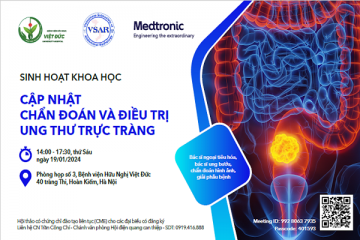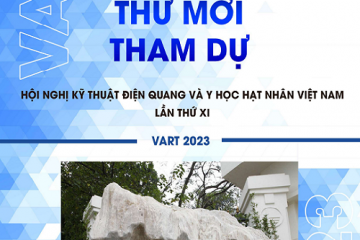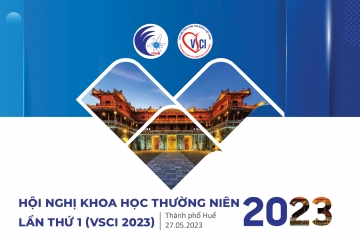Mối liên quan giữa đột biến BRAV600E, mô bệnh học và khả năng bắt giữ 18F-FDG trên hình ảnh PET/CT ở bệnh nhân ung thư tuyến giáp kháng I-131
Relationships between BRAFV600E mutation, clinicopathologic factors and 18F-FDG avidity in radioiodine-refractory differentiated thyroid carcinoma patients
SUMMARY
Objectives: The BRAFV600E mutation is one of the prognostic factors in thyroid carcinoma related to GLUT-1 expression which increases 18F-FDG uptake. In this study, we investigated the relationship between BRAFV600E mutation, clinicopathologic factors and 18F-fluoro-2-deoxyglucose (18F-FDG) avidity in radioiodine-refractory differentiated thyroid carcinoma.
Methods: Total 46 radioiodine-refractory DTC patients who underwent BRAFV600E analysis from the biopsy and 18F-FDG positron emission tomography/computed tomography from 2011 to 2018. Semi-quantitative analysis of highest hypermetabolic lesion was accessed by automated polygonal regions of interest (ROIs) drawing on attenuation-corrected PET images the Workstation AW4.7(GE). The relationship between BRAF mutation, clinicopathologic factors, and 18F-fluoro-2-deoxyglucose (18F-FDG) avidity was investigated.
Results: Patients with the BRAFV600E mutation present higher 18F-FDG uptake (median of SUVmax: 7,11) than those without mutation (median of SUVmax: 4,91) but the difference is not statisticcal significance (p=0,236). The tumor size (p = 0.006) and distant metastases (0,03) were significantly associated with 18F-FDG uptake in univariate analysis. Aggressive histopathologic type of DTC is only the factor (p = 0.01) related to FDG uptake significantly (p = 0.01) in both univariate and multivariate analysis.
Conclusion: The aggressive and classic type of DTC were the factors significantly related to 18F-FDG avidity in both univariate and multivariate analysis. The effect BRAFV600E of mutation on glucose metabolism in radio iodine refractory patients needs further study in larger groups of patients.
Key words: 18F-fluorodeoxyglucose, Positron-emission tomography, BRAFV600E mutation, histopathologic type, radioiodine refractory.
TÓM TẮT
Mục đích: Đột biến BRAFV600E là một trong những yếu tố tiên lượng trong ung thư tuyến giáp có liên quan đến biểu hiện của GLUT-1, làm tăng khả năng bắt giữ FDG. Trong nghiên cứu này, chúng tôitiến hành nghiên cứu mối liên hệ giữa đột biến BRAFV600E, lâm sàng, mô bệnh họcvà 18F-fluoro-2-deoxyglucose (18F-FDG) ở bệnh nhân ung thư tuyến giáp (UTTG) thể biệt hóa kháng I-131.
Phương pháp: 46 bệnh nhân ung thư tuyến giáp kháng I-131 đượcchụp 18F-FDG PET/CT có đối chiếuxét nghiệm mô bệnh học và BRAFV600E từ bệnh phẩm tổ chứcác tính tái phát, di căn. Đánh giá độ hấp thu FDG bằng cách vẽ vùng quan tâm (ROIs) trên hình ảnh PET/CT vàsử dụng hệ thống phần mềm. Tiến hành khảo sát mối liên hệ giữa đột biến BRAFV600E, lâm sàng, mô bệnh học và 18F-FDG.
Kết quả: Bệnh nhân đột biến BRAFV600Ecó chỉ số SUVmax(trung vị của SUVmax: 7,11) cao hơn so với chỉ số SUVmax ở bệnh nhân không đột biến (trung vị của SUVmax: 4,91) nhưng sự khác biệt chưa có ý nghĩa thống kê (p=0,236). Kích thước khối u, di căn xa có mối liên quan có ý nghĩa thống kê với khả năng bắt giữ 18F-FDG với phân tích đa biến. Kết quả mô bệnh học ở tổn thương ác tínhở nhóm ung thư tuyến giáp biệt hoá thể ác tính và thể kinh điển có mối liên quan có ý nghĩa thống kê với khả năng bắt giữ FDG ở phân tích đa biến và đơn biến.
Kết luận: Thể mô bệnh học của ung thư tuyến giáp có mối liên hệ với khả năng bắt giữ FDG của tổn thương tái phát, di căn trên bệnh nhân UTTG thể biệt hóa kháng I-131.Mối liên quan giữaBRAFV600E vàkhả năng bắt giữFDG cần phải được nghiên cứu thêm.
Từ khóa: 18F-fluorodeoxyglucose, Positron-emission tomography, BRAFV600E, mô bệnh học, kháng I-131.
Bạn Đọc Quan tâm
Sự kiện sắp diễn ra
Thông tin đào tạo
- Những cạm bẫy trong CĐHA vú và vai trò của trí tuệ nhân tạo
- Hội thảo trực tuyến "Cắt lớp vi tính đếm Photon: từ lý thuyết tới thực tiễn lâm sàng”
- CHƯƠNG TRÌNH ĐÀO TẠO LIÊN TỤC VỀ HÌNH ẢNH HỌC THẦN KINH: BÀI 3: U não trong trục
- Danh sách học viên đạt chứng chỉ CME khóa học "Cập nhật RSNA 2021: Công nghệ mới trong Kỷ nguyên mới"
- Danh sách học viên đạt chứng chỉ CME khóa học "Đánh giá chức năng thất phải trên siêu âm đánh dấu mô cơ tim"















Bình luận